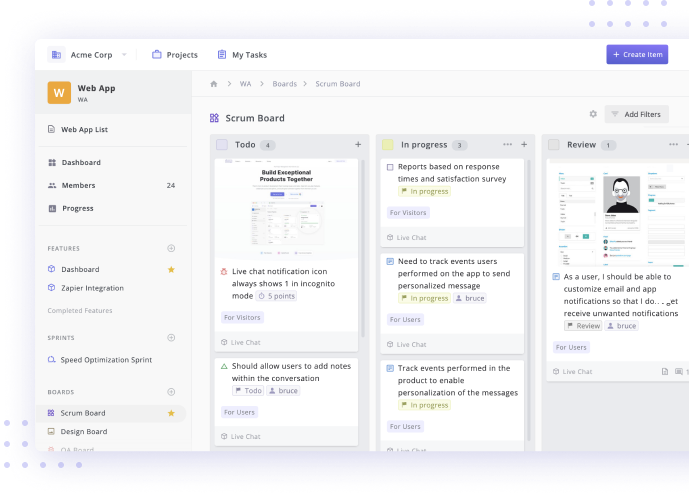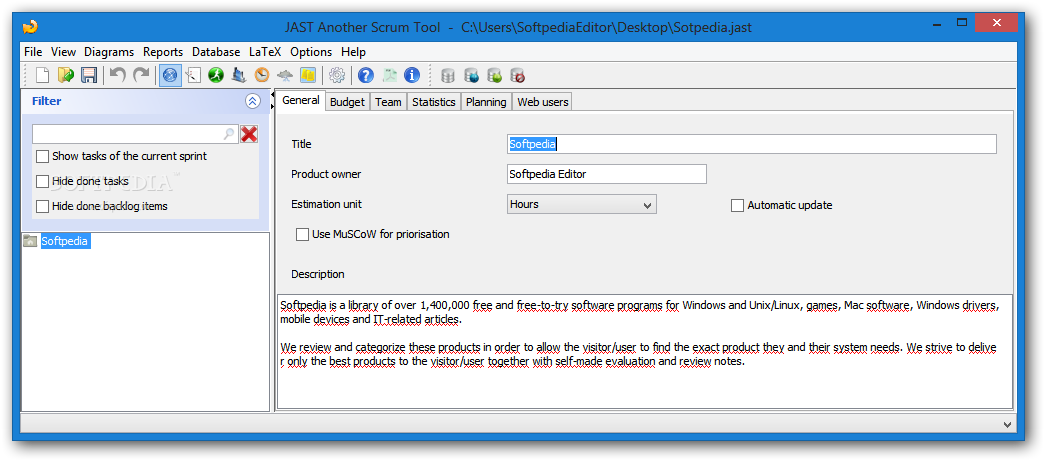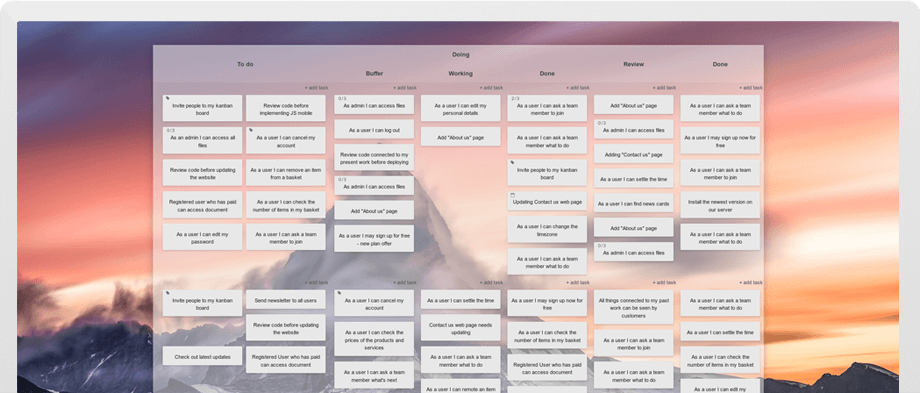

The ideal Scrum software lets you outline the tasks ahead, plan for the resources utilized for task completion and anticipate possible conflicts when resources are depleted. For instance, work materials and meeting rooms are resources to be managed for efficiency and productivity.

Resource management: Time isn’t the only thing to manage - tracking other resources that affect results is also necessary.Planning and scheduling: The ideal Scrum software has features for planning and scheduling tasks, setting priorities and deadlines, and assigning tasks to team members.The ideal Scrum tool should provide easy access, meaning that team members can easily view and share information in a few clicks. Whether it’s upcoming calendar events, completed tasks, customer and project lead, or expenses and bills prepared for clients. Documentation: All project information should be accessible in one place.Scrum software with a time tracking feature can save up a chunk of admin time every week. Budget, billing, and time tracking features: Your ideal Scrum software should enable expense tracking and provide clear and concise reporting about budget performance. If you usually deal with multiple clients, the Scrum software should also track the time spent on tasks, enabling you to issue invoices based on the work completed.

Here are some Scrum software features to prioritize: The strategy when selecting Scrum software is to look out for extra features that will improve project outcomes and make teams more efficient. While these are some of the more important features to look out for when choosing the right Scrum software tool, there are plenty of other considerations to make based on the project type, size, and use case. A good Scrum software should also offer flexibility in how data can be presented to stakeholders. Such data should be available at a moment’s notice, in real-time.Īnother essential factor to have in mind is that the tool of your choice should let you set custom fields and export data. Users should be able to pull essential data that reflect the current status of projects and tasks. As a bonus, the software program should have the ability to send out email alerts to team members.Ī vital criterion to look out for when considering the Scrum software tool is real-time reporting. Task management includes the ability to assign tasks to team members, set deadlines, and track due dates. It’s probably evident that the ideal Scrum software should have robust task management features. This is crucial because external sharing readily makes data available for everyone working on a project - including contractors, vendors, and external stakeholders.
Scrum software free free#
Many Scrum software offers free trials so that teams can try out the platform first without significant investment.Īfter ease of use, another important criteria is the ability to share information between the team members and even third parties. The Scrum master or project manager’s priority is to find a straightforward tool suitable for the development team. Some features can also be hard to adjust to, something that can impact adoption rates. Some tools for managing Scrum teams can have a steep learning curve. The list below doesn’t serve as an exhaustive one, only as a mini-guide when you make your selection.Īn important question to ask when choosing Scrum software is this - Does it fit my industry specification? The ideal Scrum software is customizable and can be adapted for different project teams, types, sizes, and industries. In choosing a Scrum tool, here are some criteria to keep in mind. Project managers are always on the lookout for excellent project management software, especially solutions with versatile features that can be adapted for the Scrum framework.


 0 kommentar(er)
0 kommentar(er)
